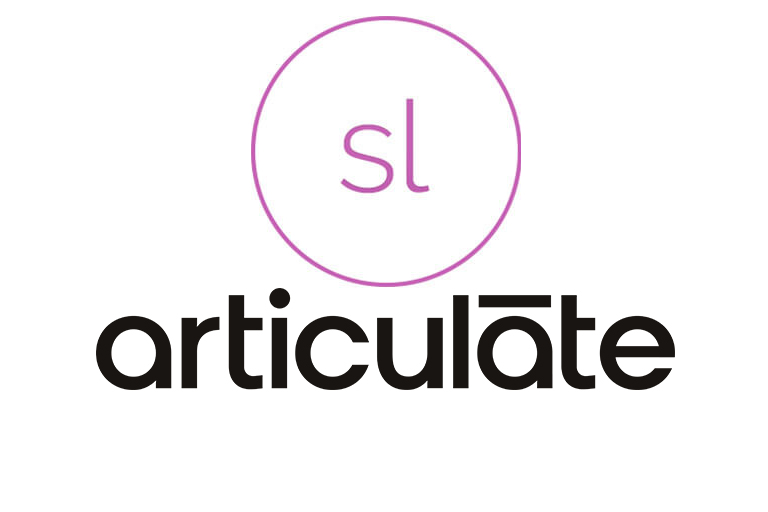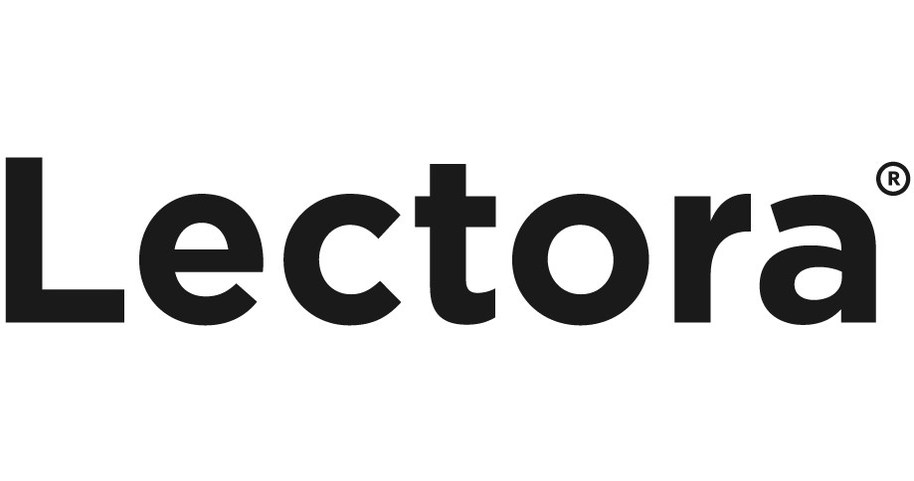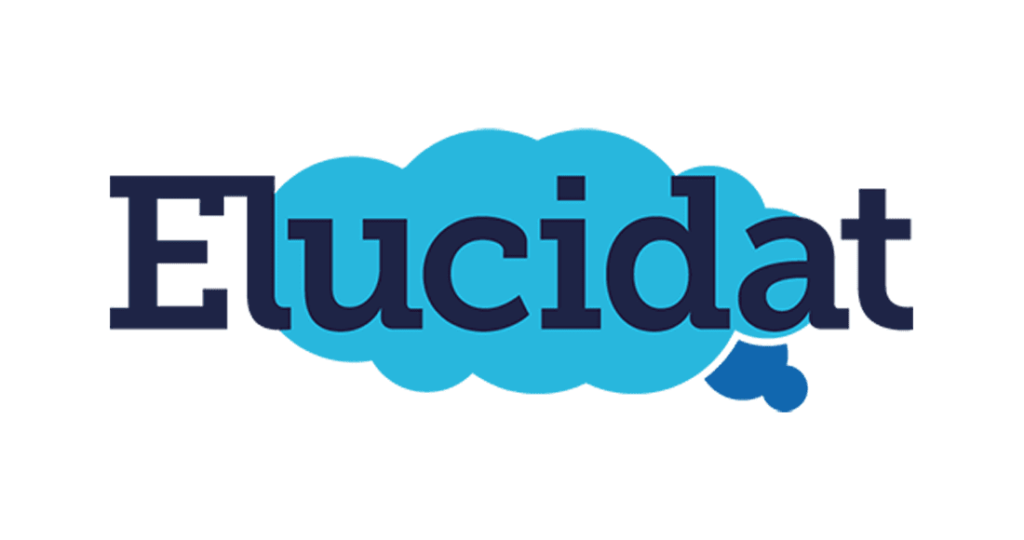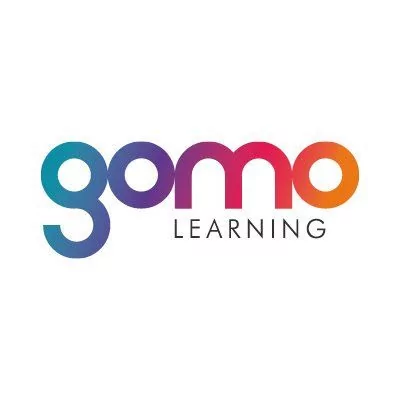Do you want to take advantage of the revolution in education and training that comes with eLearning? The numbers are in, and they prove the benefits of learning management systems (LMS) like iSpring and iSpring alternatives beyond a shadow of a doubt.
Consider this. In 2022, 42% of businesses have seen revenue growth thanks to online learning platforms like iSpring, which led to a $30 increase in output for every penny spent on online training.
iSpring Suite is an extensive authoring toolkit designed to improve instructional and training experiences. It works within PowerPoint to help creators make PPT slides into interactive eLearning courses with features like creating quizzes, simulations, video lectures, and even eBooks with a page-flipping effect.
But is iSpring the right choice for your organization? Or is it time to branch out and research other options? Doing so could be key to unlocking success stories written in the ink of innovation.
Join us as we investigate some top choices for learning management system (LMS) solutions that provide distinct advantages tailored to various needs. Get ready – your journey starts now!
- Factors to Consider When Evaluating iSpring Alternatives
- Top iSpring Alternatives
- Making the Right Choice for Your Organization
- Go Forth and Find Your iSpring Alternative!
- Frequently Asked Questions
Skip ahead to the ISpring Alternatives:
| Platform | Overview | Key Features | Pricing |
| Thinkific Plus | Thinkific Plus is a powerful, scalable learning platform that’s also easy to use—for your team and your customers. You get enterprise-grade features that scale with you as you grow, plus a team of people seriously dedicated to helping you reach your goals. | Dedicated Customer Success Team, Single Sign-On OpenID (SSO), Enterprise API access, Advanced CSS customization, Plus Portal, Custom migration planning, Salesforce integration, Multiple seats and tiered pricing checkout options, White-labeled mobile app Advanced security features. | Request pricing. |
| Adobe Captivate | Supports responsive design, allowing you to deliver mobile learning experiences across a range of devices. | Interactive content creation, Responsive design, Pre-built assets and templates, Rich media support, Assessment and tracking. |
|
| Articulate Storyline | Easy-to-use content creation tools, access to a wealth of resources, and collaboration options – making it the perfect choice for those seeking an interactive way to engage in learning. | Interactive content creatio, Media integration, Custom branding, Navigation and control, Collaboration and support. |
|
| Lectora | eLearning authoring tool that provides an extensive environment to design any kind of learning course. | Ready-made course frameworks and templates, Responsive design, Built-in asset library, Collaborative authoring, Virtual reality (VR). |
|
| Elucidat | The “what you see is what you get” (WYSIWYG) editor makes it easy to design learning materials with templates, responsive designs, and customizable branding | Easy authoring, Course templates, Responsive content, Quizzes and assessments, Accessibility,User management and collaboration, Content management, Global branding. |
|
| Gomo Learning |
Related: Your Must-Have LMS Implementation Project Plan (Downloadable Checklist)
Factors to Consider When Evaluating iSpring Alternatives
As you branch out and explore iSpring alternatives, you’ll want to consider some key factors to ensure you’re making the best choice for your needs.
Your Organization’s Needs
Every company has different requirements and expectations, so understanding what works best for you is essential. Think of finding the perfect eLearning solution like shopping for a car: you wouldn’t buy a luxury sports car if you only wanted a practical commuter vehicle.
You also wouldn’t purchase something that can only fit four passengers if your family has six members. The same goes for choosing an eLearning platform: make sure it matches your organization’s size, scalability, and industry-specific needs as closely as possible.
For example, a large corporation may need to use an enterprise-level eLearning platform that can handle hundreds of employees and the associated data, while a small business might not need all the features that come with expensive software.
Knowing what you need will help narrow down your choices and make it easier for you to select the best option for your organization.
Feature Set
Every iSpring alternative you consider should start with a basic framework of core functionalities, such as:
- Learning management: This is the basic foundation of any LMS, providing you with a platform to manage and deliver courses and track learner progress.
- Course authoring and content development tools: You should be able to create engaging content easily without needing coding skills or expensive external tools.
- Reporting and analytics: A strong reporting suite ensures that you can quickly measure learner performance, engagement levels and ROI.
In addition to these core features, it’s important to think about the unique functionalities required by your organization. For example, if you have multiple teams collaborating on course development projects, then you’ll need a tool that supports collaboration and sharing.
Alternatively, if you want to deliver courses online but also in person, then you’ll need an LMS with blended learning capabilities. You should also think about how well the system integrates into existing IT infrastructure.
For example, if your organization already has a CRM system, does the LMS integrate seamlessly so that learner data can be shared across multiple systems? Or do you need to manually copy or re-enter information? It’s important to understand what is possible before making any decisions.
Pricing and Value
As the old adage goes, you get what you pay for. When shopping for an LMS, you need to consider the cost and value. Many platforms offer subscription models with different levels of features and pricing plans.
But it’s not just about getting the most bang for your buck – you also need to weigh the return on investment (ROI) and how cost-effective it is in terms of time, effort, and results. For example, let’s say you have a limited budget but want access to all the bells and whistles of an eLearning platform that offers advanced analytics tools or content creation capabilities.
In this case, iSpring may not be your ideal choice since it offers a limited range of features for its price point. Instead, you could choose an alternative platform that offers more features and value at the same cost. This will allow you to save money while still getting access to the tools and functions needed for your eLearning program.
Top iSpring Alternatives
Below is a quick summary of the top five iSpring alternatives. To learn more about each option, click the hyperlink.
While iSpring has made its mark in the e-learning industry, Thinkific Plus introduces a refreshing and powerful alternative that seamlessly adapts to both the user and the learner’s needs. The power of Thinkific Plus lies in its user-friendly design coupled with an enterprise strength that makes scaling a breeze. Even as you’re focused on creating robust learning experiences, the platform ensures that coding isn’t a barrier, while its unmatched scalability means your growth potential is limitless.
Pros:
- Ease of Use: In contrast to many enterprise-level platforms, including iSpring, Thinkific Plus stands out with its intuitive design. This ensures that the focus remains on crafting transformative learning experiences.
- Robust Scalability: With enterprise-grade security, a comprehensive API, and seamless integrations, Thinkific Plus propels you effortlessly through your growth trajectory.
- Unwavering Support: A dedicated team stands by, primed to assist you in harnessing the full power of the platform for your e-learning endeavors.
- Personalized Mobile Experience: Branded Mobile by Thinkific ensures your courses and learning communities reflect your brand, enhancing user engagement.
Cons:
- Many Features: Its vast feature set might seem daunting initially, but each tool and integration is purpose-built to enrich the learning experience.
- Enterprise-Oriented Design: While optimized for large-scale operations, Thinkific Plus remains accessible for smaller businesses, laying the foundation for future growth.
Key Features and Benefits:
- Intuitive Course Builder: Enables swift course design without the need for technical expertise, ensuring quicker deployment and a smoother learning curve.
- Comprehensive Integration Suite: Streamlines operations by creating a unified e-learning ecosystem, enhancing both course creation and learner experience.
- Secure Cloud Hosting: Provides robust platform stability and top-notch data security, ensuring peace of mind for course creators and participants alike.
- White-label Solutions: Empowers businesses with a unique identity in the e-learning market, reinforcing brand loyalty and enhancing user engagement.
- Interactive Quizzes & Surveys: Boosts engagement by providing immediate feedback to learners, while also offering course creators insights for continuous improvement.
Pricing:
Overview:
Adobe Captivate is an ideal choice for creating interactive and engaging e-learning content. This feature-rich authoring tool supports responsive design, allowing you to deliver mobile learning experiences across a range of devices. It’s the perfect way to ensure your learners can access your content wherever they are.
Pros:
- Feature-rich authoring tool for creating interactive e-learning content
- Supports responsive design for mobile learning
- Offers a wide range of pre-built assets and templates
Cons:
- Steeper learning curve compared to other alternatives
- It can be expensive for small businesses and individual users
Key Features and Benefits:
- Interactive content creation: Allows the development of engaging and hands-on learning modules.
- Responsive design: Ensures that content is accessible and optimized for mobile devices.
- Pre-built assets and templates: Enables quick content creation with professional-grade designs.
- Rich media support: Integrates videos, animations, and other media to enrich the learning experience.
- Assessment and tracking: Provides tools for evaluating learner performance and tracking progress, essential for personalized learning pathways.
Pricing:
- Individuals: Subscription available at US$33.99/month
- Teams and enterprises: Flexible volume licensing available
- Education: Discounted rates for eligible institutions
Subscription provides ongoing access to software and all upgrades.
Overview:
Articulate 360 stands out as an all-inclusive e-learning solution with a set of features tailored to businesses and academics alike. It offers easy-to-use content creation tools, access to a wealth of resources, and collaboration options – making it the perfect choice for those seeking an interactive way to engage in learning.
Drag-and-drop functionality adds another layer of convenience when crafting content that speaks to learners on a personalized level. Though powerful, its lack of built-in LMS capabilities and cost may be prohibitive for some users.
Pros:
- User-friendly interface with intuitive drag-and-drop functionality
- Offers a large library of characters, templates, and assets
- Strong community support and resources
Cons:
- Lacks built-in LMS functionality
- It can be expensive for smaller budgets
Key Features and Benefits:
- Interactive content creation: Multiple quiz and assessment options for engaging learning experiences.
- Media integration: Support for videos, audio, and images, including closed captions and cropping capabilities.
- Custom branding: Options to personalize courses with custom fonts, logos, and themes.
- Navigation and control: Features to restrict navigation, search content, and manage course exits.
- Collaboration and support: Team slides, live chat support, priority email support, and more.
Pricing:
- Personal plan: $1,099 per user, annually
- Teams plan: $1,399 per user, annually
- Academic: $549 – $699 per user, annually
Overview:
Lectora is an eLearning authoring tool that provides an extensive environment to design any kind of learning course. It offers ready-made frameworks, mobile-friendly themes, interactive templates and lots of options for interactivity. So whether you need a basic course or something complex, Lectora has the tools you need to bring your vision to life.
This LMS goes beyond authoring tools and is designed to take eLearning experiences to the next level with interactive and adaptive courses. You get access to extensive asset libraries and even VR integration, so it can meet both educators’ and learners’ needs.
However, its complexity may make it difficult for those just starting out in eLearning. Nevertheless, Lectora offers plenty of customization options that experienced professionals will appreciate.
Pros:
- A powerful authoring tool with extensive customization options
- Supports responsive design and mobile learning
- Offers built-in accessibility features for compliance
Cons:
- Steeper learning curve compared to other alternatives
- It may require additional software for advanced multimedia features
Key Features and Benefits:
- Ready-made course frameworks and templates: Pre-built course logic and templates that reduce development time.
- Responsive design: Ensures accessibility across all devices.
- Built-in asset library: Extensive collection of stock images, audio, video, icons, and more.
- Collaborative authoring: Allows teamwork without the risk of losing work.
- Virtual reality (VR): Enables immersive learning scenarios for an enhanced learning experience.
- Accessibility leader of Section 508 and Web Content Accessibility Guidelines (WCAG): Meets compliance requirements, making eLearning accessible to all types of learners.
Pricing:
- Gold Suite includes:
- Lectora Online
- Lectora Desktop
- ReviewLink
- Asset library
- $117 monthly
- $1,398 annually
Overview:
Elucidat is a comprehensive eLearning authoring platform that offers plenty of tools for creating courses. The “what you see is what you get” (WYSIWYG) editor makes it easy to design learning materials with templates, responsive designs, and customizable branding. So you can build your content quickly and effectively.
This eLearning authoring tool offers a comprehensive package of features that will give your organization everything it needs to create interactive and adaptive learning courses. From simple authoring tools to responsive content design, social polling, and engaging multimedia embeds, Elucidat provides the total package for those wanting superior eLearning content.
It’s like having a toolbox full of all the components necessary to build something great – without any hassle or guesswork.
Pros:
- A user-friendly cloud-based tool with collaboration features
- Comprehensive options for course creation, customization, and branding
- Supports engaging and interactive content, ensuring a rich learning experience
Cons:
- Does not have built-in LMS functionality
- It may be pricier than other alternatives in the market
Key Features and Benefits:
- Easy authoring: WYSIWYG editor allows you to see changes as you make them.
- Course templates: Ready-made templates for various learning methodologies and the ability to create your own.
- Responsive content: Adaptive courses that adjust to different screen sizes.
- Quizzes and assessments: Variety of interactions for knowledge checks and scoring.
- Accessibility: Compliant with WCAG 2.1 and Section 508 standards.
- User management and collaboration: Tailored user roles, external reviewers, and comment audit trail.
- Content management: Centralized asset library with project locking for easy updates.
- Global branding: Manage multiple brands, set company logos, and choose from hundreds of fonts.
Pricing:
- Starting at $2,500 per user per year
- Minimum of three users per plan
- Resulting in an upfront investment of $7,500
Overview:
If you’re looking for an alternative to iSpring, Gomo Learning is worth considering. It’s a cloud-based authoring tool that makes it easy to create, publish, and track online learning content with features designed for both individual users and teams.
With plenty of customization options available, it offers the flexibility you need to build whatever type of course or training program your organization requires.
Gomo Learning provides a powerful and accessible platform to create, deliver, and analyze e-learning content. With its cloud-based design, it can be used on any device. It’s also highly customizable, allowing you to tailor your learning experience according to your needs. You’ll appreciate the intuitive controls that make navigating Gomo easy.
Pros:
- A cloud-based tool that facilitates multi-device learning and collaboration.
- Built-in analytics to provide detailed insights into learner performance.
- Customization allows for a wide range of visual and functional customization options.
Cons:
- Limited pre-built assets offer fewer templates compared to competitors.
- Complexity constraints mean it may not be suitable for very intricate course creation.
Key features and Benefits:
- Visual design: Themes, customization, and personalized branding.
- Content management: Embedding images, animations, buttons, etc.
- Assessments and quizzes: Knowledge checks, randomization, feedback.
- User interaction: Actions, variables, table of contents, glossary.
- Admin controls: Team management, single sign-on, overwrite protection.
- Resource management: Centralized library, update features.
- Translation and localization: Multi-language support, XLIFF export/import.
Pricing:
- Personal plan: $890/year.
- Small Team plan: $2,490/year.
- Enterprise plan: Custom pricing.
Navigating The Pros and Cons
It is important to keep in mind that the pros and cons of each alternative can differ depending on your organization’s individual needs. Consider what will work best for you based on these factors, and make sure to do your research before making a final decision.
With this information, you should be able to confidently select an iSpring alternative that works best for you.
Making the Right Choice for Your Organization
When it comes to selecting an alternative option for your organization, you need to make sure that you are making the right choice. It’s important to weigh the pros and cons of each option in order to determine what best suits your needs.
You’ll want to prioritize what matters most when assessing solutions: cost, features, and ease of use. Just as important is considering how well an alternative integrates with any existing systems you already use.
Due diligence is vital when selecting an alternative solution for your organization – you don’t want to make a hasty decision only to find out it won’t work as well as expected. Take the time to research all available options, ask questions, and read reviews to make an informed choice.
Once you have identified a few solutions that meet your criteria, try them out in small-scale tests before making the full switch. This will allow you to see how each performs in practice and help determine which one is right for your organization’s needs.
Go Forth and Find Your iSpring Alternative! and Consider Exploring Thinkific Plus
Finding the right iSpring alternative for your unique needs is essential, as each tool offers different features and capabilities. With some research and exploration, you can easily identify which solution best suits your particular goals and situation.
We examined five potential alternatives to iSpring – Thinkific Plus, Gomo Learning, Adobe Captivate, Elucidat, Lectora, and Articulate Storyline 360 – comparing their features side-by-side to help shed light on the decision-making process.
The key takeaway from this article is that there are many great options available when it comes to finding an effective eLearning authoring tool. While iSpring might be a great fit for some, there are plenty of other eLearning options that could be even better suited to your specific needs and circumstances. For organizations seeking a blend of simplicity, power, and personalized support, Thinkific Plus presents itself as a strong alternative.
Beyond just features, it offers an ecosystem where businesses, educators, and learners coalesce to create and experience transformative learning journeys. If you’ve known iSpring and are contemplating a switch, or if you’re new to the domain and gauging your options, let Thinkific Plus unveil its potential to you. It might just redefine how you perceive e-learning.
Frequently Asked Questions
What are the main reasons organizations look for iSpring alternatives?
The main reasons organizations look for iSpring alternatives include seeking different features, pricing options, scalability, or ease of use that better aligns with their specific needs and changing circumstances.
How do I know if an iSpring alternative is right for my organization?
Knowing if an iSpring alternative is right for your organization depends on carefully evaluating several factors. Examine pricing packages, content creation tools, and integration with existing systems. Just as importantly, assess whether the platform features mesh with your unique requirements and evaluate regularly to assess your return on investment (ROI).
Can I switch from iSpring LMS to an alternative without losing my data?
You can switch from iSpring to a different LMS without losing data if you take precautions. It’s like building a bridge between two places: you must ensure that the materials and foundations are strong enough to support the journey. Research, compare options, and experiment with smaller-scale tests if necessary. Don’t be afraid to ask for help from experts who can guide you on your path. With careful preparation, you can make the transition quickly and confidently – and start reaping the benefits of a new LMS platform.
What are the key features to look for in a learning management system?
The key features to look for in a learning management system include interactive content creation, responsive design, collaboration tools, assessment and tracking, analytics and reporting, and customization and branding options.
How can I ensure a smooth transition to a new LMS platform?
You can ensure a smooth transition to a new LMS platform by taking the time to plan ahead. Double-check you know what features and capabilities your new platform offers and how it will interact with other systems. Consider any potential downsides of switching platforms that could disrupt workflow or training delivery. Finally, make sure you are familiar with the user interface and navigation of the new system so that users can quickly become accustomed to using it. With some forethought and preparation, transitioning to a new LMS platform can be a breeze!














